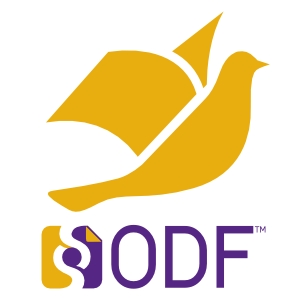Best practices for creating and editing Open Document Format (ODF) files
 Adhering to these guidelines can enhance productivity and guarantee that documents remain consistent, robust and accessible over time, irrespective of the platform.
Adhering to these guidelines can enhance productivity and guarantee that documents remain consistent, robust and accessible over time, irrespective of the platform.
Firstly, use an editor such as LibreOffice that natively supports the format without conversion. This preserves the nuances of the ODF XML structure, supports all its features and reduces the risk of formatting issues or data loss. It also ensures that documents are fully compatible with the ISO standard.
Secondly, use an up-to-date version of LibreOffice to benefit from continuous improvements in ODF feature management, avoid bugs that could cause file corruption (a rare event thanks to the robustness of the ODF format, but still possible) and enjoy the highest level of security in file management.
Thirdly, use LibreOffice document templates and styles for all elements, such as headings, fonts, paragraphs, and tables, to ensure consistent formatting throughout the document. This allows you to make global changes quickly by changing the style rather than each individual element, and improves accessibility, as screen readers and other assistive technologies rely on a consistent structure. This also results in smaller, more robust ODF files.
Creating and reusing LibreOffice templates is an excellent practice for companies that produce many similar documents (such as invoices or monthly reports). Once all the characteristics of the document have been defined, simply save it in ‘template’ format to obtain a blank copy with all repetitive elements already in place.
The fourth condition is to save and back up documents frequently and regularly. ODF files are compressed XML files, which makes them robust and reliable, but not immune to problems. In a business environment, it is advisable to use a cloud storage solution with a version history, such as Nextcloud, which allows you to revert to an earlier version of a file.
The fifth recommendation is to avoid overly complex formatting to ensure maximum compatibility when sharing ODF files with a diverse audience or converting them to other formats, such as Microsoft Office proprietary formats, because complicated layouts, embedded objects or macros may not work or appear differently.
It is recommended that you use basic styles and standard LibreOffice fonts (open source and available to all users), or fonts that can be installed by any user, independently of the operating system, even if backed by an End User Licence Agreement (such as Microsoft Aptos, which can only be downloaded from the Microsoft website). You should also avoid excessive use of tables or nested text boxes.
The sixth condition is to integrate multimedia content sensibly, optimising images or videos used in presentations to reduce their size without compromising quality.
The seventh and final condition is to always save the original file in ODF format, even when sharing with users who insist on using Microsoft Office’s proprietary format — thereby handing over ownership of their files to Microsoft. Once the document is finalised, save a copy in OOXML format and share this with Microsoft users.
Similarly, when receiving an OOXML document from a Microsoft user, immediately save a copy in ODF format for editing until the document is finalised and the OOXML copy can be shared again.
When sharing a document within a team, it is advisable to use comments to provide feedback instead of editing the body of the document, enabling change tracking so that changes can be reviewed before acceptance or rejection. Where possible, collaborate on a shared ODF platform based on LibreOffice technology and the cloud, such as Collabora Online.
Open standard formats such as ODF allow you to avoid dependence on a single supplier, maintain ownership and control of your documents, and future-proof your work — but only if used wisely. Following best practices will enable you to manage ODF documents more smoothly and conveniently without sacrificing any of the advantages of the ISO standard format.
